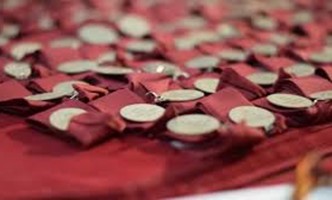
The AIA Fellowship (FAIA) represents the highest honor within the American Institute of Architects, recognizing architects who have made significant and lasting contributions to the profession and society. As the 2026 Fellowship cycle approaches, understanding the criteria and the submission process is crucial for those aspiring to this prestigious designation. This article delves into the six “Objects” of nomination and offers guidance on preparing a compelling submission.
Understanding the Six Objects of Nomination
The AIA categorizes significant architectural achievements into six distinct “Objects” of nomination. Candidates must select one Object and a related Sub-Object that best highlights how their work has impacted the profession beyond their immediate firm, community, or region.
- Object One: To promote the aesthetic, scientific, and practical efficiency of the profession.
Focus: Distinguished work broadly recognized for design excellence, integrating creativity, functionality, sustainability, human experience, context sensitivity, and cultural relevance.
Sub-Objects: Design, Urban Planning & Design, Preservation.
- Object Two: To advance the science and art of planning and building by advancing the standards of practice.
Focus: Architects who have made notable contributions to the profession through their work, broadly impacting others’ architectural practices.
Sub-Objects: Practice Management, Practice Technical Advancement.
- Object Three: To coordinate the building industry, and the profession of architecture.
Focus: Architects who have actively and cooperatively led the AIA or a related professional organization over a sustained period, gaining widespread recognition for their results.
Sub-Objects: Led the Institute, Led a Related Organization.
- Object Four: To ensure the advancement of the living standards of people through their improved environment.
Focus: Architects who have made notable contributions in public service, government, or industry organizations by providing transformative leadership in architecture, planning, and design of built environments.
Sub-Objects: Public Service, Government, Industry Organizations.
- Object Five: To make the profession of ever-increasing service to society.
Focus: Architects who have made notable contributions that have benefited and impacted the profession beyond their own practice, community, or region.
Sub-Objects: Alternative Career, Service to Society, Volunteer work with organizations not directly connected with the built environment.
- Object Six: To advance the science and art of planning and building by advancing the standards of architectural education and training.
Focus: Architects who have made notable contributions to teaching, research, administration, or writing that have a lasting impact and are widely recognized.
Sub-Objects: Education, Research, Literature.
Preparing Your Submission: Demonstrating Your “Ripple Effect”
The core of a successful Fellowship application lies in demonstrating the “ripple effect” of your work—the significant impact your contributions have had on the field of architecture and society beyond your daily practice or immediate geographic area. This impact can be evidenced through various avenues, including:
Public Speaking: Engagements that share your expertise and influence wider audiences.
Publications: Contributions to national and regional publications that disseminate your ideas.
Mentorship: Guiding and shaping the next generation of architects.
Teaching: Educating students and professionals in academic settings.
Service to the Profession: Active involvement in professional organizations and initiatives.
Broad Geographic Influence: Work that extends its impact beyond local boundaries.
Legacy Through Others: The lasting influence of your work as carried forward by colleagues and proteges.
When preparing your submission, it is highly recommended to highlight aspects of your work that align with areas of special interest to the AIA, such as diversity, sustainability, or mentoring emerging professionals. Additionally, consider how your contributions resonate with the principles outlined in the AIA Framework for Design Excellence.
Resources for Aspiring Fellows
The AIA provides a wealth of resources to assist candidates in navigating the Fellowship application process. These include:
- The comprehensive 2026 Fellowship Application PDF.
- An introductory guide to the Path to Fellowship.
- An AIAU course specifically designed to guide you through the application process.
- A nomination signature form.
- A DQ checklist.
- Access to exemplary past submissions that serve as valuable guides.
The submission deadline for the 2026 Fellowship cycle is October 8, 2025, by 5:00 PM ET. Notifications to candidates will be sent in mid-February 2026, with a public announcement in late February 2026. The formal Investiture Ceremony for newly elevated Fellows will take place at the AIA Conference on Architecture & Design in June 2026.
Becoming an FAIA is a testament to a career marked by significant contributions and a lasting legacy. By understanding the “Objects” and meticulously preparing your submission to demonstrate your profound “ripple effect,” you can embark on the journey towards this distinguished honor.
Important Dates for the 2026 Fellowship Cycle:
Please note that the following dates are for the 2026 Fellowship cycle, meaning those elevated in early 2026 for contributions up to 2025.
Submission Deadline: October 8, 2025, by 5:00 PM ET
Notification to Candidates: Mid-February 2026
Public Announcement: Late February 2026
Investiture Ceremony: At the AIA Conference on Architecture & Design in June 2026
The AIA College of Fellows represents a commitment to architectural excellence and a profound dedication to advancing the profession for the benefit of all. For those who attain this distinguished honor, it is a testament to a career marked by significant contributions and a lasting legacy.
To learn more, go to https://www.aia.org/design-excellence/college-of-fellows.